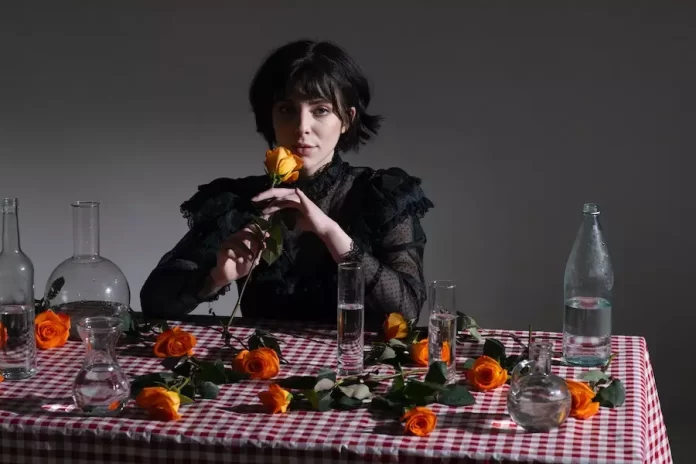The 90s are back and so is the Gothic fashion trend. From dark makeup to velvet and lace, learn how to rock the Gothic look and why it’s making a comeback.
Gothic fashion is making a comeback in early 2023, nearly three decades after its initial emergence in the 1990s. The gothic style is characterised by dark, mysterious, and often macabre elements, including black clothing, heavy metal jewellery, and gothic motifs like crosses and bats. You can dress it up or down depending on the occasion. From its punk roots in the underground music scenes to its recent appearance on celebrity red carpets, Gothic design has proven its staying power throughout the decades.
What Is Gothic Clothing Style?
Gothic clothing style is a fashion statement that has been around for decades, originally emerging in the late 1980s. For many, it represents an embracing of alternative culture and aesthetics involving dark and edgy colours such as black, grey, purple and red offset with occasional lighter colours such as white or pink. Common items of Gothic clothing include corsets, fishnet tops, skirts, chokers, necklaces, crucifixes, jewellery and boots. Popularised by the goth music scene through the likes of Siouxsie Sioux and Marilyn Manson, Gothic clothing can be worn in any season but many associates this style with Fall when darker colours are more classic choices for fashion lovers alike.
The 90s All Over Again: The Return Of The Gothic Clothing Style
The 90s left the fashion world with plenty of memorable moments, and one look that is making a huge comeback is the Gothic style. This trend consists of head-to-toe black outfits with an edgy twist, including lace-up boots, ripped jeans, and jewellery with dark motifs. It also typically features lots of layers – thick chunky sweaters paired with leather jackets – which are clearly designed to up the attitude level of any ensemble. It might sound a bit scary, but this look is actually quite versatile.
The gothic subculture first emerged in the late 1970s and early 1980s in the United Kingdom, where it was associated with punk and post-punk music. In the 1990s, the gothic style spread to the United States and other countries, where it became a popular subculture among young people. However, by the end of the decade, the gothic style had largely fallen out of fashion, and the subculture faded into obscurity.
- Now, nearly 30 years later, the gothic style is making a resurgence, driven in part by the nostalgia of people who grew up in the 1990s and early 2000s. Many of these people are now in their 30s and 40s, and they are looking back on the gothic style with fondness. They are rediscovering the music, the fashion, and the attitudes that defined the gothic subculture, and they are bringing these elements back into the mainstream.
- One of the key factors driving the return of the gothic style is social media. Platforms like Instagram and TikTok have given people a new way to connect with each other and express themselves. They have also created new opportunities for fashion brands and influencers to promote their products and styles. As a result, the gothic style is once again becoming a popular trend, with people posting photos of themselves in gothic clothing and accessories, and with influencers sharing tips on how to create gothic-inspired looks.
- Another factor contributing to the return of the gothic style is the rise of alternative fashion. In recent years, there has been a growing interest in alternative fashion and subcultures, as people look for new ways to express themselves and to stand out from the crowd. The gothic style, with its dark and edgy aesthetic, is a natural fit for this trend, and it is attracting a new generation of fans who are drawn to its rebellious and unconventional spirit.
- In addition to fashion, the gothic subculture is also seeing a resurgence in its music and its attitudes. Bands that were popular in the 1990s, like The Cure, Siouxsie and the Banshees, and Bauhaus, are once again influencing new musicians, and their music is being rediscovered by a new generation of fans. At the same time, the attitudes that defined the gothic subculture in the 1990s, such as a rejection of mainstream norms and a focus on self-expression, are also making a comeback.
- However, the return of the gothic style is not without its challenges. For many people, the gothic subculture is still associated with negative stereotypes, such as being dark, brooding, and introverted. These stereotypes can make it difficult for people to fully embrace the gothic style, and they can also limit the potential of the subculture to reach a wider audience.
Conclusion
Despite these challenges, the return of the gothic style is a positive development for many people. It offers a new outlet for self-expression and creativity, and it provides a way for people to connect with others who share similar interests and attitudes. Whether the gothic style becomes a lasting trend or simply a passing fad, it is clear that it is once again playing an important role in the cultural landscape, and it is helping to shape the way that people think about fashion and identity. That’s it for today’s article. On another day I will highlight a new one. If you have any questions please let us know in a comment, Thanks for being with us.


